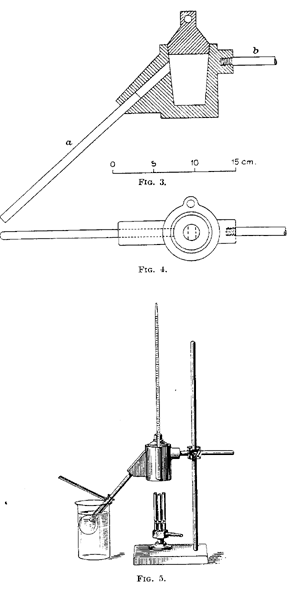In order to produce oil by the carbonisation of coal, peat, or oil shale, it is necessary to reach the decomposition temperature (400 degrees to 300 degrees celsius) of all the constituents capable of forming oils. It is advantageous not to raise the temperature beyond that absolutely required. so as to avoid any secondary superheating of the oil vapours, and even to cool the vapours as rapidly as possible to temperatures below 300 degrees.
Prolonged heating to higher temperatures would lead to the decomposition of valuable constituents with formation of gas and a consequent culmination of the oil yield.
For this reason methods of low-temperature carbonisation have been developed for the production of oil. The crude product of distillation containing the oil is called primary tar (" Urteer "). The gas which is always formed in the process contains the highly volatile oils (benzine). These can be recovered by various means, such as washing with oil, compressing, cooling to low temperatures, or by treatment with activated charcoal.
For testing the suitability of fuels for oil production by distillation, the aluminium retort, illustrated in Figs. 3 to 5, is now frequently used.

The apparatus consists of a cast, thick-walled aluminium crucible provided with a ground-in cover and outlet tube of special shape. The crucible is fitted with a lateral bore for the insertion of a thermometer or a thermo-couple. The high thermal conductivity of the aluminium and the thickness of the walls ensure uniform heating of the coal, avoid superheating, and permit an exact temperature control. The apparatus is made in different sizes, for 20, 50, and 100 grams of coal.
